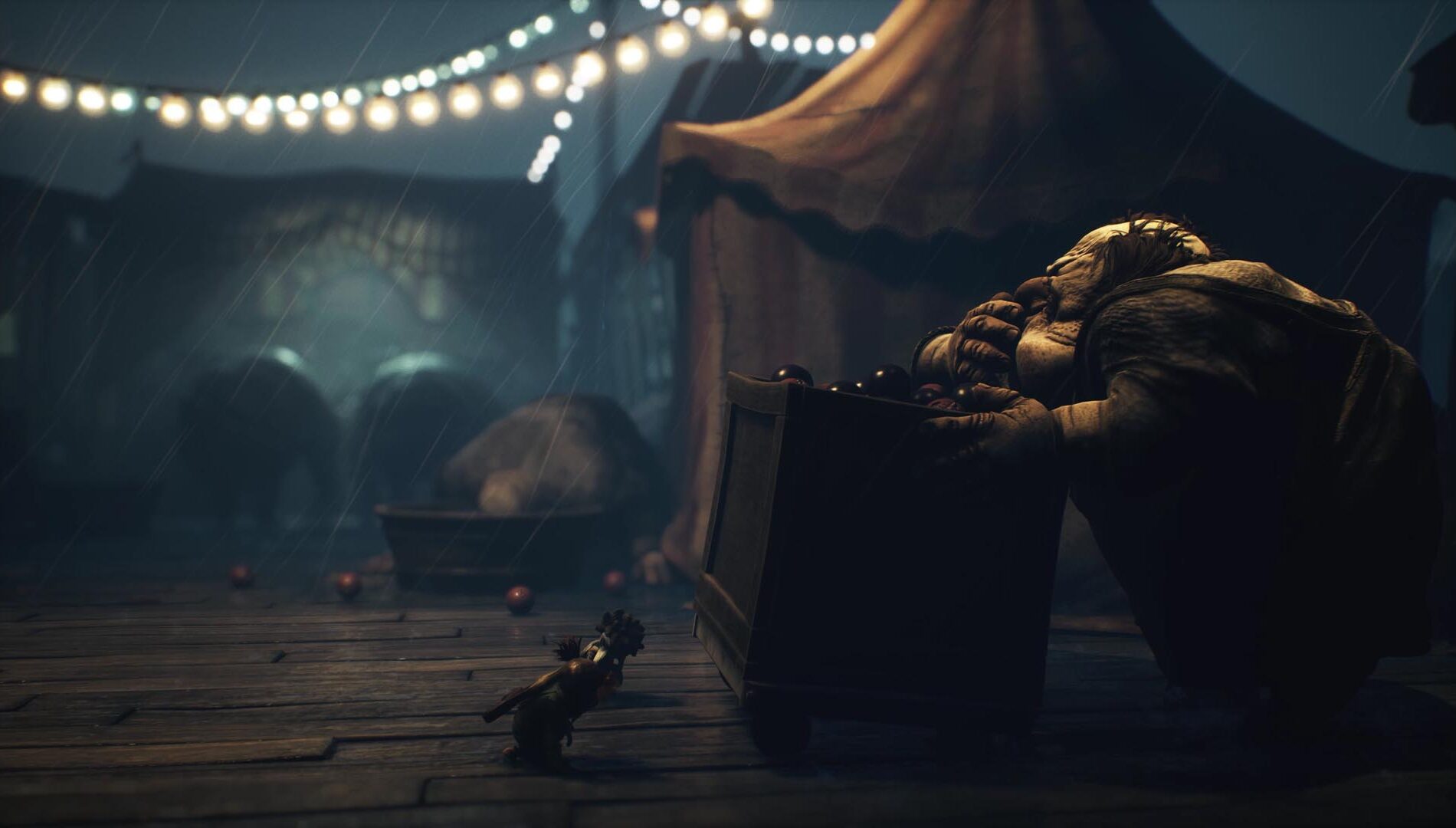The Carnevale was the setting for the Little Nightmares III demo at Gamescom, and it immediately felt like stepping into a memory that had been bent out of shape. Lanterns glowed too brightly, laughter drifted through empty spaces, and fairground stalls invited you in only to reveal something rotten up close. It was playful on the surface, but every detail carried a weight of unease that never really let go.
A descent into a twisted carnival
The Carnevale level immediately sets a different tone from anything we’ve seen before in Little Nightmares. It’s not just another dark corridor or creaking room, it’s a whole fairground draped in light and colour, but every detail feels wrong. The Herd, grotesque shapes gorging themselves on candied apples, sway clumsily as Low and Alone sneak past. Watching the demo, you feel that mix of wonder and dread at the same time. Part of you wants to stop and look around, but the other part just wants to hide in the nearest shadow. The level plays with that tension and never really lets you settle.
Mechanical nightmares and strange solutions
The Carnevale is more than a backdrop, it’s a puzzle box. Every stall, every prop, every misplaced toy feels like it could be used to trick or distract the creatures standing in your way. At one point the developer tossed an apple across the floor, drawing the Herd’s attention long enough to slip by unnoticed. Another section relied on activating a water hose, creating a small moment of chaos that opened a path. Even the puppets you meet here refuse to behave like normal enemies. Knock one down and it keeps moving unless you finish the job by destroying its head. Alone’s wrench and Low’s bow come into play naturally, not as blunt weapons but as tools to change the environment, break open doors or reach switches you otherwise couldn’t. It is smart design that constantly reminds you survival here is never just about running faster, it is about thinking differently.
Two shadows in the dark
What struck me most wasn’t just the setting or the mechanics, but the way the two characters move together through it all. Low and Alone aren’t heroes, they’re fragile, scared children, but their connection turns every puzzle into a quiet act of trust. Sometimes one draws attention so the other can slip by, sometimes they work in tandem to open a path. Even if you play solo, with AI handling your partner, the relationship feels tangible. The pacing remains tense and oppressive, yet there are brief flashes of relief in their cooperation. It is those fleeting moments, two tiny figures pulling each other up from the edge of danger, that capture the heart of Little Nightmares. Horror here isn’t just about what lurks in the shadows, it is also about clinging to whatever fragile bond you can find in the middle of it.
A carnival of unease
The more I saw of the Carnevale, the more it felt like a twisted memory of childhood reshaped into something hostile. Brightly coloured tents, funfair rides and scattered sweets should feel comforting, but instead they loom like decayed relics of something you no longer trust. The Herd shuffle endlessly, the puppets twitch inhumanly, and the music itself seems to mock you as you edge forward. The level works because it constantly unsettles without ever losing its logic. Every space is explorable, every threat can be outsmarted, but never without risk. By the time the demo ended it was clear this chapter isn’t just a change of scenery, it is a statement of intent. Little Nightmares III is stretching its wings, layering familiar dread with new mechanics, co-op tension and environments that demand attention. The Carnevale doesn’t allow you to play on autopilot. It asks you to notice, to improvise, and to never forget how small you really are in a world that wants you swallowed whole.


